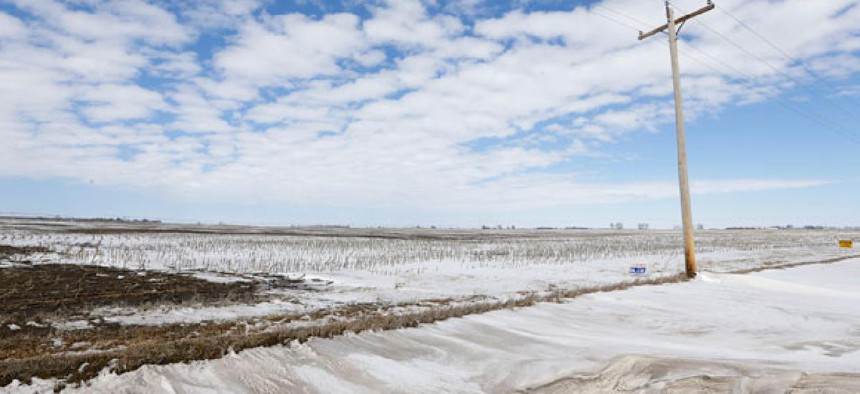Will the State Department Ever Listen to These EPA Concerns About Keystone?
Regulatory agency writes another letter to State.
In a letter responding to the State Department's draft environmental assessment for the Keystone XL pipeline, the EPA finds several areas it deems insufficient. Perhaps the third time's the charm on State doing something about it.
The pipeline has become a focal point of the national — and, to some extent, global — environmental movement. Proposed by TransCanada, Keystone XL would shunt diluted bitumen, a sludge from which petroleum products can be developed, from Alberta, Canada, to the Gulf Coast. It's a1,179-mile project, running through the heart of the country. To TransCanada and fossil fuel advocates, it represents a needed upgrade to the country's infrastructure. To environmentalists, it represents a major escalation of the systems behind and contributors to climate change.
Because the pipeline crosses an international barrier, the State Department is tasked will final permit authority over the project. And since it's in charge, it also has to complete an environmental impact analysis. In March, the agency released its latest draft, which indicated that State felt comfortable that the project wouldn't dramatically increase greenhouse gas emissions and that a new proposed route that avoids the sand hills of Nebraska reduced the risk of a spill polluting a critical aquifer.
Each time an agency completes an environmental impact statement (EIS), the EPA reviews and comments on it. Three times the EPA has reviewed State's assessments for Keystone. And three times — in 2010, 2011, and yesterday — the EPA has found the assessments to be either insufficient or inadequate. In this case, "The EPA review has identified significant environmental impacts that must be avoided in order to provide adequate protection for the environment," in part because "the draft EIS does not contain sufficient information."
There are four specific reasons that the EPA faults the current iteration of State's draft EIS.
Read the rest at TheAtlanticWire.com.




